Installing Debian on VMware Workstation allows users to run the Debian Operating System in a virtual environment. In this guide, we will walk through the step-by-step process, from setting up VMWare Workstation to completing the Debian Installation. Whether you are new to virtualization or just need a refresher, this article covers it all. So, if you want to install Debian on VMware Workstation, this guide is for you.
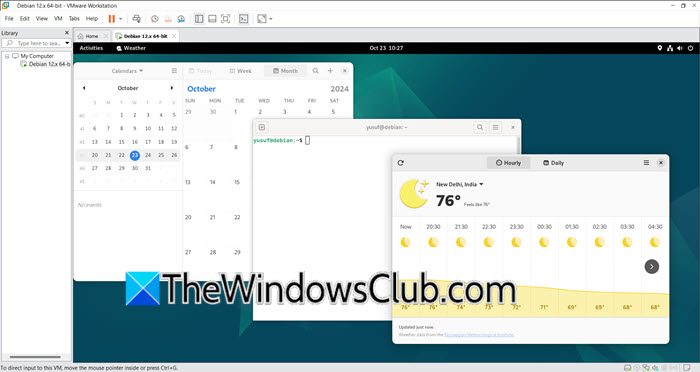
How to install Debian on a VMware Workstation?
If you want to install Debian on VMWare Workstation, follow the steps mentioned below.
- Make sure to meet the prerequisites
- Create a new Virtual machine
- Install DB11
- Complete the Installation process
Let’s explore the details of these steps, breaking them down into simpler terms.
1] Make sure to meet the prerequisites
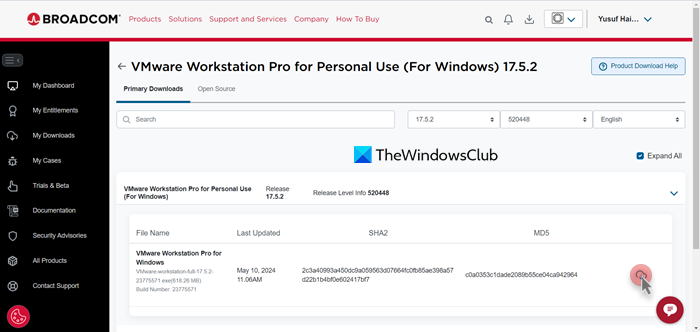
First and foremost, it’s necessary to have VMware Workstation installed on the system along with the Debian ISO File. If you have not downloaded the Debian ISO File, head to Debain.org to access the Debian ISO image. Once there, click on the debian-12.7.0-amd64-netinst.iso hyperlink and allow it to start downloading Debian. You can also download VMware Workstation from vmware.com and install it on your computer.
2] Create a new Virtual Machine
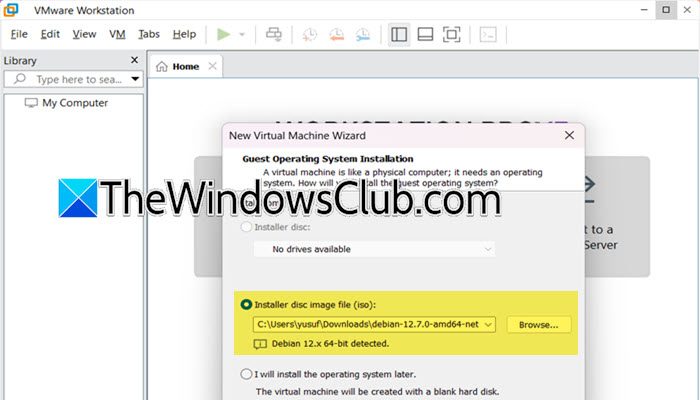
The next step involves creating a new Virtual Machine on VMWare. Here’s how to do the same.
- After installing VMWare Workstation, open VMWare Workstation, and click on the Create a New Virtual Machine option.
- We recommend you select Typical and click on Next.
- Make sure you have selected the Installer disc image file (iso).
- Click on the Browse button, search and select the downloaded ISO File, followed by clicking the OK, and Next buttons simultaneously.
- If the error, ‘Could not detect which operating system is in this disc image. You will need to specify which operating system will be installed.’, pops on the screen, hits the Next button, and clicks the Guest Operating system-Linux, followed by selecting Deblian 11.x 64-bit, and hitting the Next button.
- Give a name to your virtual machine and click on Next.
- Set Maximum disk size and go with the default option which is Split Visual disk into multiple files, and then click on Next.
- You will see the other configuration of your VM. If you intend to make any changes, click on the Customize Hardware option and do that; otherwise, click on Finish.
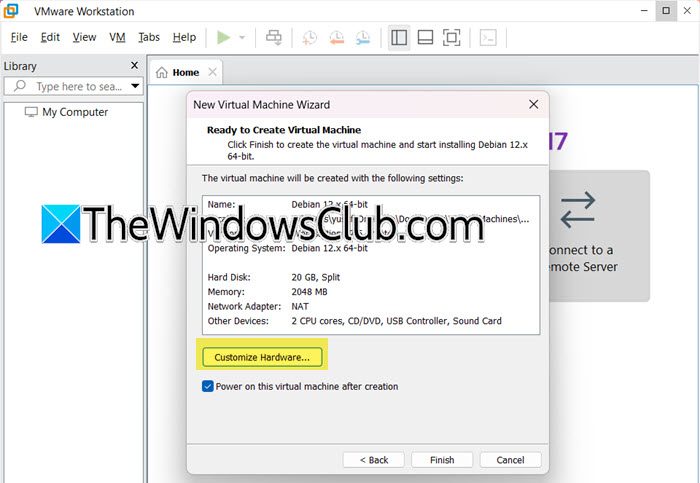
Now that we’ve set up a new Virtual Machine, let’s move on to installing DB12.
3] Install DB12
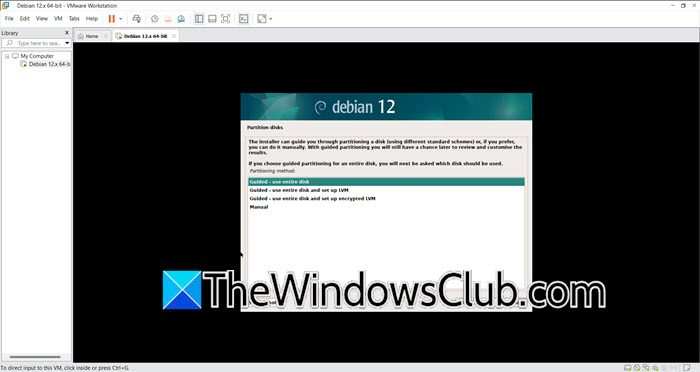
After we have set up the New Virtual Machine, it’s time to begin installing DB12.
- Open VMWare, choose the newly created VM and then select the Play Virtuam Machine option.
- After booting from the virtual DVD, a boot menu with several installation options will appear on the screen. Choose Graphical Installations, and hit the Enter button.
- Set preferences for settings like language, location, and Keyboard layout, and select the continue button after every setting.
- Once the process is completed, provide a hostname for the system and domain name in the Network configuration dialog box. Follow the process by entering a username and password. Once done, configure the clock and hit the Continue button.
- In the Partition disk configuration screen, set Guided-use entire desk, select the disk to partition > continue> highlight the All files in one partition option, and then hit the Finish Partitioning and write changes to disk option > Continue.
- Choose the Yes button to confirm the changes, and start the installation process. Once done, if you wish to configure the package manager, select yes, and then click on Configure the Package Manager.
- Tick the boxes of Debian Desktop environment, GNOME, Standard system Utilities, Web server, and SSH server, and follow it by clicking the Continue button.
- Finally, install the GRUB Bootloader on the hard drive, necessary when no operating system is present.
- Confirm the decision by clicking Yes, then choose the /dev/sda as the installation location for the GRUB.
That’s how you can install Debian on your computer.
4] Complete the installation process

After installation is completed, users will get prompts to reboot the virtual machine. Once rebooted, the GRUB bootloader screen will appear on the screen, select the Debian GNY/Linux option, and proceed to log in with the designated username and password, leading to the Debian Linux desktop interface. Users will also be asked to either install VMWare tools for the Linux pop-up menu or select the Remind me later option. That’s how we can install and set up Debian Linux on VMWare.
That’s it!
Read: How to install Fedora on VMware Workstation?
How to install Linux on a VMWare?
To install Kali Linux on a VMWare, the steps are as follows:
- Download Kali Linux ISO files
- Create a new Virtual Machine
- Install Kali Linux
- Complete the installation process
- Install VMWare tools on Kali Linux VM.
Read: How to Install Ubuntu in VMWare Workstation?
How do I launch Debian Installer?
The first step in launching the Debian Installer is downloading the Debian ISO File. The step is then followed by launching VMWare Workstation and creating a new Virtual Machine. To learn the full process, check out the aforementioned article.